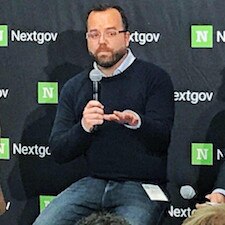How 3 Government Agencies Used Cloud Technology To Deliver Innovative Solutions



The public sector can use cloud-based technology to innovate and address constituent needs faster, building valuable trust between officials and citizens.

Matt Goodrich
When you think of enterprise-size ground-breaking, innovative organizations, companies like Amazon and Apple are probably what come to mind. Less likely to top the list are government agencies. Stymied by strict compliance standards and regulatory measures, it’s easy to assume governments can’t innovate at the speed of the private sector.
But this just isn’t true. While it’s not always easy to meet complex statutory requirements when moving to the cloud, reframing these regulations as guardrails instead of obstacles gives governments the room and flexibility they need to innovate. Government innovation has the potential to create great things — the internet and global positioning systems (GPS) are just two examples of many that have come from government-led research.
So, where can governments innovate and lead the charge on digital, cloud-based transformation?
Innovation needs a secure platform
The key to unlocking innovation is a secure, compliant technology platform that supports, not hinders, progress. Information security continues to be a high-risk area for governments at all levels, especially as cyber-based threats and security vulnerabilities persist for IT officials. These security issues have also bred mistrust between governments and their constituents.
With only four out of 10 citizens saying they have confidence in national authorities, innovation is not only a welcome solution but a necessary one for governments who want to provide secure services and build trust with their constituents. FedRAMP (Federal Risk and Authorization Management Program) authorized platforms like Salesforce Government Cloud Plus to allow government organizations to innovate fast without compromising security, keeping exposure low with regular updates.
Capabilities you need to improve mission impact
Platforms like Salesforce can support the public sector’s unique security needs while spurring innovation efforts.n



Let’s take a look at how three government agencies used cloud-based technology to address constituent needs with innovative, impactful solutions.
1. Creating custom solutions for faster service
Bridging the gap between the public and private sectors is no easy feat. The Texas Department of Information Resources (DIR) is tasked with bringing public and private sector processes across the state together to fuel technological innovation in their state. But a paper-based process for issuing RFPs (request for proposals) and evaluating vendor proposals was a roadblock to the innovation for which the DIR strived.
Knowing it needed to digitize its procurement process to best serve constituents, the DIR used customizable app solutions to digitize procurement, streamlining the delivery of important services to constituents. The team developed BidStamp to transform its paper-based process into a digital, automated workflow. Now, DIR employees can consolidate and evaluate 100+ page vendor proposals quickly — helping them make informed purchasing decisions faster and getting innovative technology solutions into communities quicker.
What’s even more remarkable about the Texas DIR’s success is the app solution was created by a junior administrator with little IT experience. The platform made it easy for her to develop secure applications on her own, accelerating the innovation process without the need for new staff or costly investments. Developing new apps on the cloud provides a fast, cost-efficient solution to support the mission of government agencies like the Texas DIR, allowing them to maximize the impact for constituents.
2. An Office of Emergency Services delivers critical support in times of crisis
Government agencies have the often-difficult job of responding to emergency situations to ensure their constituents’ safety. As COVID-19 spread across the United States, one Office of Emergency Services in particular knew they had to support workers on the frontlines to minimize the impact of the virus and keep citizens safe.
With minimal information about the effects of COVID-19 and no official playbook to follow, the team needed a system that could scale to meet the scope of a crisis they couldn’t necessarily estimate. The “clicks, not code” interface allowed their team to build a FedRAMP-compliant PPE management system in the span of just two weeks. With a single, automated source, the agency was able to manage the sourcing, procurement, and distribution of much-needed PPE supplies to the state’s frontline workers.
The speed enabled by a cloud-based platform made it possible for officials to create a quick solution to efficiently deliver services. They also applied lessons learned from their PPE solution to other areas of its mission, identifying ways to streamline the delivery of resources in the wake of crises like wildfires, people experiencing homelessness, and other disaster recovery efforts — giving constituents faith their government is there to support them in times of need.
3. A contractors’ registrar modernized outdated processes
Like many, this contractors’ department registrar has a mission to protect the health, safety, and welfare of the public through regulatory systems designed to promote quality construction. It issues over 43,000 licenses to construction companies and investigates nearly 7,000 claims each year — a workload handled by just 105 employees. The agency’s manual, form-heavy process was cumbersome for employees and applicants, with complaints and applications taking months to address.
“Esse quam videri means to be rather than to seem, or to be good without concern of how you look,” said the agency’s director. “It’s a phrase my team and I have taken to heart as we work to be the premier contractor licensing agency, managing our resources, and navigating external relationships to further our mission.”
In an effort to speed up the process, the team partnered with a global Salesforce partner to develop a FedRAMP-authorized digital case management system. By digitizing the application process, it’s employees built a 360-degree view of its applicants — making it easier and quicker to approve new applications, renew existing licenses, and address customer complaints.
The digital application process saves the team upwards of 8,000 hours of data and eliminates the need for a third-party application, a savings of nearly $100,000 annually. Perhaps more importantly, digital transformation improved the customer experience by making the entire process available online. Now, contractors can get licenses issued and renewed in less time, and their concerns are addressed in days and weeks, not months.
Accelerating innovation in the public sector
Governments across the country already lead the charge on innovation, using cloud-based technology to improve their systems and bring better services to their communities. Cloud platforms with FedRAMP certifications give public sector leaders the freedom to explore new solutions that address evolving constituent concerns with the peace of mind that their information is safe and secure.
With the support needed to innovate at the speed and scale necessary to meet today’s demands, governments can use cloud-based technology to address constituent needs faster, building valuable trust between officials and citizens.
Innovation your citizens want in the timeframe you need
The public sector can innovate fast with the right technology to power those efforts.


























